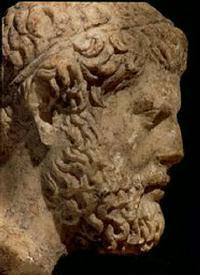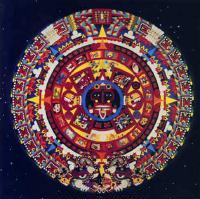Roman remains in America

Europeans emigrated to America before 1492. There is no doubt about it. Among them, the Basques engaged in fishing in Newfoundland waters and the Vikings migrated from Greenland to North America. The conclusion that some anthropologists have now drawn from another discovery is that the Romans were also in Central America.
The discovery took place in 1933 in the Toluca Valley, 65 kilometers west of Mexico City. A small terracotta was exhumed, that is, a clay figurine baked. It is the head of a man with beard a few centimeters high. Note the absence of any pre-Columbian style. The terracotta was lost. Finally, in 1994 the anthropologist Santiago Genoves rediscovered it and took it to the museum of Mexico City. The anthropologist Roman Hristov decided to investigate its origin.
Heat traces

He took samples of the terracotta hill and took them to the Max Plank Institute. There he analyzed the methodology of thermoluminescence. This technique transforms the electrons accumulated over time into light. Measuring the light you can know when it got into the oven. The head is made 1,800 years ago, that is, approximately the year 200. Hristov turned to art experts. Experts claimed it was Roman art. In addition, according to studies on the discovery, the head was buried before 1510, ten years before the Spaniards arrived in Central America.
According to archaeologist David Kelley of Calgary University, the head was unearthed by professionals. "It was under the three layers of earth. It has the maximum reliability that archeology can offer." According to Hristov, the relations between Europe and America are proof that they are prior to the arrival of Spain. But it is not clear whether it will clarify that debate. "I don't know why the old relationship should be impossible," explains Betty Meggers, an anthropologist at the Washington DC Museum of Natural History. He says that in Japanese and Ecuadorian pottery there are several similar characteristics.
Archaeologist David Grobe of the University of Illinois agrees that it is a Roman terracotta. However, he believes he could reach Mexico differently. It can come from a Roman boat sunk on the coast, without any relationship between people of that time. In addition, in pre-Columbian art there have been no remains of mixture of cultures, neither Roman, nor of other European countries.
Buletina
Bidali zure helbide elektronikoa eta jaso asteroko buletina zure sarrera-ontzian











